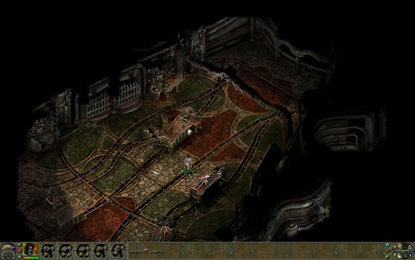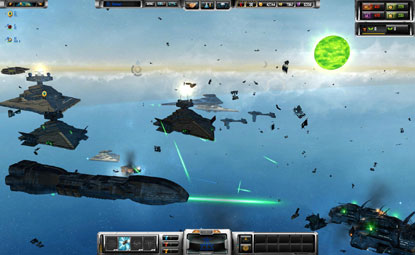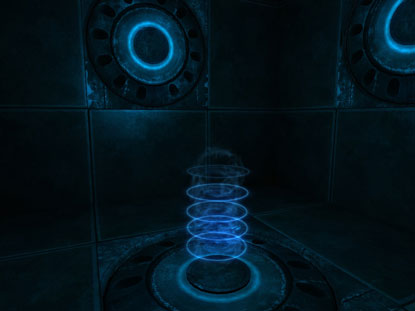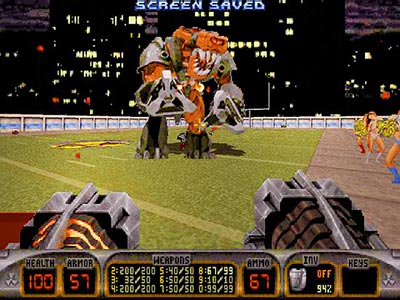Tech Frequent News for the Tech Geek
In 2010 TechFreqNews provided great tech reviews on all sorts of innovative products info about great tech websites, and all sorts of other information for us, tech geeks. They also had a great TFN Superstore. Content below is from the site's 2010 archived pages. We sorely miss you TFN and perhaps even more so during the lock downs here in Melbourne Australia because of Covid 19. Of course those of us who are Aussie punters have turned en mass to online casinos now that how favorite bars and clubs are closed. I always check in each week at this page at this online affiliate site to see the upcoming weekly promos for free spins, match bonuses, and new pokies. Instead of playing video games, I am now playing video pokies or video poker. I still play video games. My favorite right now is Minecraft, although my friends are really into FIFA 20 or Borderlands 3. Perhaps I should get with the more recent video games. But you have to admit, Minecraft is a classic and it wouldn't still be around if it weren't good!
+++
2010 POSTS
5 Huge Game Conversions You Must Download Right Now
- November 22nd, 2010
- By root
Trying to track down a list of “five game mods you must download right now” is a lot like trying to choose your five top games of all time. Sure, your list might be impressive—maybe even awesome—but you’re still going to get a heap of contenders sobbing in the corner at your refusal to acknowledge their almost-noteworthy existences. And nobody likes bawling boxed titles.
So let that be a warning to you, fun-loving gamer who continues to read this article. I’m covering freeware game modifications this time around—freeware, obviously, because I doubt your average enthusiast is going to risk the wrath of a developer’s fury because he or she is selling blood, sweat, and tears in the form of a $5 game add-on. As well, I’m not just looking at maps, or other whip-dip little tweaks. I’m talking about huge transformations that range from, “making this game playable in the modern era” to “wow, I want to go back and revisit this title because it is now sweet.”
I’m paraphrasing, of course. But you get the idea.
But as I mentioned, narrowing down to a list of five is near-impossible. So if you don’t have an affinity for the Infinity Engine (including Baldur’s Gate and Planescape: Torment), Sins of a Solar Empire, Fallout 3, TIE Fighter/X-Wing Alliance, or Half-Life 2… you might want to sit this one out. Otherwise, let’s get real.
Planescape:Torment (et al.)

I’m just going to focus on my all-time favorite game, Planescape: Torment, but know that other such tweaks (in the same spirit of those I’m about to mention) exist for other games based on Bioware’s Infinity Engine.
So, where were we? Yes. Planescape: Torment, one of the greatest video games of all time, is practically unplayable on modern gaming systems. If you have the old, disc-based version of the title, you’re pretty much out of luck. And even if you’ve grabbed the latest GoG-based version of the game/installer, you’ll be able to play Planescape… but you’ll hate the low-resolution experience you’ll be forced to endure on your souped-up gaming PC.
So, to fix that, a group of modders have released various tweaks that—for starters—build support for any and all monitor resolutions right into the title. Throw in a litany of tweaks, hacks, and unlocks for buried content within the game’s data files, and you have the makings of a perfect community drive to keep One Of The Greatest Games Ever Produced (capitalization intentional) alive in our hearts, minds, and astral dimensions.
TIE Fighter / X-Wing Alliance
No, I’m not covering two games at once—even though they’re technically the same games or, at least, the same spirit of games. It’s widely understood that Lucasarts’ TIE Fighter is one of the greatest games, if not the greatest game, ever created. It’s an excellent space combat title that puts you in the role of a lowly pilot for the Empire, working your way up through the ranks to harder and crazier missions including, yes, flying alongside Darth Vader himself. Cool, eh?
Unfortunately, this title is old enough to make it damned near impossible to play on a modern system without some wacky kind of virtualization setup in place. And even then, you’re not really getting the best-in-class experience: Your default resolution will look downright ugly on your snazzy big monitor and the game’s graphics… well. They’re a bit dated.
So what do you do? Instead, use your TIE Fighter disc alongside your X-Wing Alliance disc (you did buy both, right?) to essentially perform a total conversation of X-Wing Alliance with TIE Fighter material. Using the newer game’s better engine, you’ll be able to play all your favorite old flights in updated, pretty-looking glory.
Download the various files and packs here!
Sins of a Solar Empire

If flying around in space isn’t your thing, how about sending other ships around in space and letting your digital pilots sop up the mess that your larger orders create? That’s right. Sins of a Solar Empire is a real-time strategy title that’s a whole heap of fun to play. However, it’s even more fun if you take the requisite steps to geek out your game to maximum levels.
If you’re a Star Wars fan (who isn’t?), be sure to check out the total modification “Star Wars – Requium,” which adds the Alliance and the Empire as playable races within your game. That includes a whole arsenal of new ships (no Death Star, sadly), new elements within the game’s research tree and, yes, even customized music.
But if you’re not a Star Wars fan, that’s ok too. You might want to then check out the conversion package called “Star Trek: Sacrifice of Angels 2.” It goes without saying what kinds of ships, races, and technologies you might experience in this one. Don’t forget about the Borg!
Download the Star Wars mod here!
Download the Star Trek mod here!
Fallout 3

I confess, I never quite got into Fallout 3 myself—my counterpart, Nathan Edwards, thinks that makes me the worst gamer of all time. But if you’re like me, perhaps the total conversion “Cube Experimental” might give you a reason to click that install button one more time. And if you’re a super-fan of the game, well, you’ve already clicked on the “download” button for this extensive mod by now.
So what is Cube Experimental? In short, one of the most talked-about mods for Fallout 3. The general theme of the mod is that you’re stuck in the center of a giant puzzle—a cube, obviously. The goal? Find your way out. And then the real fun starts!
With more than 500 different scripts, brand-new voice acting, and brand-new music, this isn’t just a little series of tweaks and hacks overtop a new map. Cube Experimental is a brand-new experience in itself, and it’s worth your while to check out. I would definitely say that this mod rivals the quality of a typical DLC pack.
Download it here!
Half-Life 2

Fresh on the heels of my “what the heck is this” recommendation of Cube Experimental for Fallout 3, I bring you Half-Life 2 fans a taste of lunacy all your own. In this case, the total conversion is called, “Dear Esther,” and it’s a complete mind-trip for those used to playing the game all normal, pew-pew-the-bad-guys style.
It’s difficult to really summarize this modification in words—you’ll understand once you install it for yourself. Dear Esther is more of an interactive narrative than anything else, and this modification’s excellent combination of voiceover storytelling and ingenious level design does much to weave a player through your character’s tragic tale. Many consider this mod to be one of the more unique transformations of a game ever created, and it’s frequently found at near the top of many “must-download” mod lists. Give it an install and you’ll soon see why.
Download it here!
David Murphy. TIE Fighter. A match made in heaven. Though he is quite thrilled to be able to play PS:T again without having to deal with an absurdly small monitor resolution.
Duke Nukem: The Once & Future King?
- November 22nd, 2010
- By root
The inside story on PC gamings greatest comeback—and a look at the game itself
Thrills, drama, a long grind, and a twist ending—these are the sorts of things you normally expect from a videogame. They are not what you expect from the story behind a game. But then, Duke Nukem isn’t any ordinary game, and the saga of its development has been anything but normal. For more than 13 years, the gaming world’s been waiting for Duke, and now the end is in sight. But first, lets review whats happened until now.

It all started back in 1996, with Duke Nukem riding high. The game for which he was known, Duke Nukem 3D, was a megaton hit, and gamers clung to the cocksure hero’s every machismo-laden word. He was, quite literally, the king. He was on top of the world. Then in 1997, the follow-up, Duke Nukem Forever, was announced and, shockingly enough, it was all downhill from there. Duke disappeared. Year after year passed, and short of a few quick glimpses of the game, Duke was a disappointing no-show. His once-loyal fan base declared him dead. Anticipation rotted and festered, boiling over into angry cynicism.
The nail in Duke’s supposed coffin, however, came in the form of developer 3D Realms closing up shop in 2009 and a subsequent lawsuit from publisher Take-Two Interactive. And then everything went silent. Game Over. Continue? 5 4… 3… 2… 1…
But wait! At the last second, Borderlands developer Gearbox Software stepped in and saved the day. Now, Duke Nukem Forever’s back on track and—get this—it’s actually going to come out this time. So, how’s the game? Who’s in charge now? After more than a decade of waiting, will it all be worth it?
We traveled deep into the heart of Texas—to Gearbox’s only-slightly evil lair—for three interviews with the men responsible for the past, present, and future of Duke Nukem. We’ll tell you what they have to say about the legendary franchise and we’ll share the details of our hands-on experience with the upcoming game. Yes, Duke fans, it’s safe to dream again.
Duke Nukem Then
Original Duke Nukem designer George Broussard explains the series turbulent development history

Maximum PC: Dukes come a long, long, long way. So were just gonna ask: what took so long? What made you shy away from releasing DNF for all these years?
George Broussard: I wish there was an easy or dramatic answer for what took so long but there just isnt. It was just never ready. We had lots of development issues along the way. It wasnt a quest for perfection as some silly article in Wired implied last year.
I think what hurt us the most was licensing engines and trying to change them too much. Shit happens and after delays the options are to continue or kill the game. I never wanted to kill the game. We got things turned around dramatically in 2007-2009, with a lot of new hires, and most of the game as it exists today was created in that timeframe.
Do you worry that, in your pursuit of technological superiority, you allowed Duke Nukem to become a relic himself? Do you think Duke, with his crass and juvenile ways, can still be relevant in todays super-serious shooter world?
Duke offers contrast and something very unique and different from the cookie cutter, cardboard, generic game heroes that dont have an ounce of personality. Its ok to not like Duke or think him juvenile, but at least hes not boring and vanilla. Most people play games to escape and enjoy a fantasy for a while.
What do you think makes Duke so endearing as a character? Why have people continued to care so much for so long?
I think like Darth Vader is an ultimate archtype of a villain, Duke follows the archtype for the alpha male action hero. When we created Dukes character outline we wanted him to be a combination of Arnold Schwarzennegger, Clint Eastwood and John Wayne. Combine those characters with a distinct look, attitude and one-liners and the result is that Duke is just an iconic character.

Expect to relive this football stadium battle in Duke Nukem Forever.
Howd the Gearbox deal come about?
First, we had a relationship with Randy and Gearbox. Randy worked for us in 1996-97 and I play poker with Randy and some Gearbox guys every week. Second, we were in a bitter lawsuit with Take 2 that was going to last for years as they had shown no interest in being reasonable. Third, behind the scenes, there were 9 or so ex-3DR guys (Triptych Games) that were working on DNF in secret, on their own money, out of a house, because they believed in the game.
Summer of 2009, I played Borderlands at Gearbox, prior to release. That afternoon, Randy and I talked about the suit and how things were going. He mentioned that hed love to help or get invovled, and while it wasnt clear what that meant, it was clear he was passionate to somehow get involved with Duke.
A couple weeks later I mention Randys interest in passing to my partner Scott and everyone got to talking. Around Xmas 2009 a strategy was planned that would leverage Gearboxs positive relationship with Take 2 (due to Borderlands success), settle the suit, and get the game published.
How do you feel about that deal? Is it a best-case scenario for DNF? How much input do you have on the game now, if any?
Its the result of several back to back miracles that people will get to see this game. Imagine flipping a coin 5 times and getting heads each time. It should be win win for everyone involved. From what Ive seen the game is still largely what we had in May 2009, but with a year of work and polish from the guys at Triptych Games. We provide feedback when asked about all things Duke but its largely out of our hands now so well see what happens.
Is it difficult letting someone else finish up and ultimately take the reins on your creation? Do you regret not getting to finish the game yourself?
Sure, but it is what it is, and at some point you get enough distance and perspective to let things go. It probably took about a year. Im just glad we worked it all out.
How did you originally envision Duke Nukem Forever? Gearbox’s goal seems to be a sort of tribute to all that Duke stands for. Their mantra seems to be “It’s the Duke you’ve always known, but bigger, better, etc.” Was that your goal throughout Duke Nukem Forever’s development process as well?
Part of why we did this deal is that we knew Randy pretty well and he worked on the add-on for the original game and he loves and gets Duke. So, its probably in pretty good hands and I think they will treat it as a top series inside Gearbox. Its hard to continue an ip that someone else created, but by them owning it now, they are incentivised to care about it and not treat it as a middle tier licensed project.
What’s next for you? Do you still want to develop games? Or does the future hold something entirely different?
To be honest I havent thought much about it. Im just enjoying the time off. I still play games and love making them.
Next page: Duke Nukem Now with Gearbox cofounder Brian Martel »
+++
Top 5 Posts in 2010
Windows Phone 7: Tried and Tested (32 comments)
Windows Phone 7: Tried and Tested
- November 11th, 2010
Ultimately, the colorful, striking home screen is the first thing people notice about any Windows Phone 7 smartphone, and that’s a good thing. In fact, it is the best possible reaction Microsoft could hope for.
The truth is that, given the large gap between Microsoft and its competition, namely Android and the iPhone, anything less than extraordinary would have doomed Windows Phone 7 from the start. There’s a greater truth here however, one that has heretofore gone unspoken. Since U.S. Robotics’ debut of the Palm Pilot in 1996, we’ve been essentially stuck with the same look and feel for our PDAs and smartphones. Sure, Android extends the desktop metaphor a little bit, but isn’t it pretty much a Windows/Mac desktop?
So we’re happy to see something different. And we’re slightly surprised to see such a refined and polished mobile operating system. It’s not perfect. Windows Phone 7 lacks deep layers of customization, cut/copy/paste functionality, and there’s a dearth of third-party app support. But it’s different in a good way, so much so that critics are having a hard time identifying what it is about this fledgling OS that makes people so happy. That’s a good sign for Microsoft and a better sign for all of us.
We’re going to take a deeper look at the OS and pit in head-to-head battle against Google Android. Welcome to the smartphone party, Microsoft. You’re late, but we’re glad you’re here.
The Review
The core of Windows Phone 7 is the home screen and its symmetrical, Mondrian-esque arrangement of large square tiles, each of which provides entry into a basic task such as email, web browsing, games, text messaging, calendars, and more. Each tile is plainly labeled, and each account is easy to set up. We appreciate that each of our separate email inboxes was labeled independently—Outlook for our Exchange server, Comcast, Google Mail, Yahoo Mail, etc. (You can customize these account names.) Critics and users have bitched about the lack of a unified inbox that lumps all of our emails together. Our take: It’s a nicety, but not a necessity. These days, most of us use separate inboxes to reflect our various personas—worker bee, family man, pervert—so the separation makes sense.
Each of the tiles on the start screen are “live”, meaning that the OS constantly updates them with new alerts in real-time. Typically, the alerts consist of a number signifying the number of new emails or items to process, but in the case of the calendar, specific meeting details are displayed. Microsoft’s decision to use larger tile icons than Android, Blackberry, and iOS is key; all three competing mobile operating systems notify you of updates on the home screen, but the WP7 design makes it much easier to see these updates at a glance. One other nice touch is that the lock screen itself notifies you of new email, calendar entries, and text messages. Neither Apple nor Android does this.
We were pleased to discover that, across the board, this interface consistently removes one to two steps from almost every single smartphone task we perform on a day to day basis. The only real exception to this is the ability to pick up news, weather, and sports scores via the desktop widgets that Android permits.
As a general rule, the level of customization consistently disappointed us. You can customize the placement of individual tiles on the Start screen—an extended press on an icon allows you to drag it around the home screen and place it wherever you’d like. You can also “pin” just about anything—applications, websites, photos, games, people, podcasts, and more—to the home screen in the same manner. After just under a week of usage, we wanted to adjust the color and/or size of individual tiles. We wanted to leave a row of tiles blank in order to group our applications. None of this is possible.
The inability to customize the Windows Phone 7 OS at deeper levels is our most substantial gripe. In our minds, customization equals optimization and, as a general rule we want to be able to mold our mobile experience at the interface, text, and input levels.
Unrealistically, we expected that because Exchange and Outlook are Microsoft products, Outlook in Windows Phone 7 would function in some kind of special manner. We were misguided. Performance around message delivery and syncing is identical. The interface and color design is vastly superior to Android’s email client. It’s amazing how a shift to black text on a white background—you know, the way we actually read most of the text in our lives—works wonders for legibility. (Android phones’ default mode uses white/colored text on a black background.)
SMS Texting in Windows Phone 7 utilizes a threaded approach, with each SMS conversation housed in a separate window. One aspect of SMS/MMS messaging that we appreciate is that it’s really easy to attach images to your messages. Click the attach icon, and you’re good.
We cheered the presence of Microsoft Office, which allows us to create and edit Word and Excel documents, and edit .PPT decks from the convenience of our smartphone. One minor disappointment is that you can only save your documents locally or on a Sharepoint server—we want to be able to save our docs to Microsoft’s cloud-based Skydrive service.
Given the prevalence of touchscreen smartphones, one of the most important aspects of mobile operating systems is the quality of the virtual keyboard. We confess to feeling initially disappointed by Windows Phone 7 here. Compared to the iOS and Android keyboards, it feels too small and the keys are too crowded, particularly in landscape mode. One of Android’s great strengths is that you can swap out the default keyboard for a handful of other high-quality opotions. We expect (and hope) that we’ll soon see a series of third-party replacement keyboards for sale in the Windows Phone marketplace. We were pleased to discover that the virtual keyboard’s adaptive traits were top-notch. It constantly adapted to and corrected the errors caused by our clumsy, meaty thumbs.
Games, Music, People, and More
One other significant change in Windows Phone 7 is the way the OS treats your friends and social networks. Instead of shunting your social life into a series of applications,, Microsoft has created a dedicated channel—People—that allows you to keep track of all of your real and faux friends’ posts, status updates, and more. It functions in a similar manner to Blackberry 6’s aggregate social view, but looks prettier. This aggregated people view also extends to the Photos category of the OS—here you can see all of your friends’ most recent photo posts.
For existing Zune users (like us), the integrated Zune support is a beautiful thing; it essentially means that every WinPhone is also a Zune HD. This means that you can download and stream all of the Zune catalog of music, podcasts, and videos. The only exception to this rule is that, for some reason you can’t stream or download Zune music channels. The most important thing to know is that the Zune PC software functions as a sync client for WinPhone devices in the same manner that iTunes does for iPhones. Plugging your device into your PC initiates an automatic two-way sync (if you prefer), although you can also set up your phone to sync with your home PC via the wireless network.
Microsoft created a lot of hype around the built-in integration with Xbox Live, which is simultaneously a category for downloading and playing games as well as a way to keep track of your Xbox Live achievements, score, and more. One nice touch is that you can download a trial version of every single game in the marketplace. At launch, there were only 20+ games available for download; this will have (hopefully) increased substantially by the time you read this.
At launch, app support is clearly Windows Phone 7’s biggest weakness in comparison to Google and Android. It will take Microsoft many months to catch up to the massive app libraries available on Android and iPhone and the truth is that, in terms of raw numbers, it will never fully catch up. At launch, some hyper-basic categories such as instant messaging, Dropbox, and Google Voice weren’t available. That’s a big concern because it probably reflects a wait-and-see attitude by third-party app developers. Still though, it’s probably just a matter of time before we see thousands of apps across all major categories.
In conclusion
Days after the launch, one of Maximum PC’s Facebook fans, I Jedi, summed up the key question around Windows Phone 7: What is Microsoft bringing to the table that will encourage adoption of its platform? It’s a fair question. Upon launch, it seems that Windows Phone 7 meets at least two key criteria for standing apart from the competition mainly, the user interface design is so strikingly different that everyone wants to touch it. That’s a great start.
Beyond this, the fact that 95% of the world uses some incarnation of Windows presents a massive opportunity for Microsoft to bring more power and more functionality to the table. We’re intrigued by Windows Phone 7 for what it does well—interface and interoperability—and for what it can do in the future. In 12 months time, we envision a mobile OS with built-in remote connectivity to our desktop, our media server, and our home network. We envision a massive games library, with deep hooks to our Windows and Xbox games. We see built-in file sharing via SkyDrive. And yes, we see cut and paste.
The 12-18 month smartphone upgrade cycle we all live by means that Microsoft has definitely inserted itself into the smartphone conversation. We’ll see what happens next.
Deathmatch: Windows Phone 7 vs. Android
Previously, in Smartphone Deathmatches: In a surprise upset, Google Android bested both Blackberry and Apple iOS on the merits of its customization, flexibility, and rapidly swelling application support. This month, we’re tossing Windows Phone 7 in the cage with the iPhone killer. Can Microsoft’s fledgling mobile OS hold its own against a pack of angry Androids? It’s time to find out.
Round 1: Ease of Use
The Windows Phone home screen is everything we want in a phone; attractive, dynamic, and functional. Android’s home screens are more customizable and we love the ability to place widgets but ultimately, the desktop metaphor feels a little dated. WinPhone’s use of categories trumps the all-in-one approach of Android. Overall, Microsoft has a created a much easier at-a-glance interface. We considered penalizing Windows Phone 7 for the absence of cut/paste, but then we tried to remember the last time we used it on our phone, and could not.
WINNER: WINDOWS PHONE
Round 2: Flexibility and Customization
Microsoft has emphasized simplicity in its mobile operating system, and the end result is that, aside from the ability to tweak the colors and position of the tiles on the home page, you can’t change very much of the interface at all. We love Android in this regard, which allows us an abundance of control over our mobile environment. You can change pretty much every single element of the desktop, applications, and power management settings.
WINNER: ANDROID
Round 3: Application and Developer Support
Android has over 100,000 apps. At launch, Windows Phone only had a few thousand, and was missing some big categories, such as all Google apps (no surprise there), Instant Messenging, and more. Over time, Microsoft will catch up—and WinPhone’s use of achievements in games is novel—but right now, this category is a no-brainer.
WINNER: ANDROID
Round 4: Email and Messaging
Both operating systems’ email clients are easy to set up and offer built-in support for Exchange, Gmail, Yahoo, and POP. Microsoft’s interface and color design is slightly superior to Android, mostly because we can see three lines of text in the default view. Although Windows Phone’s threaded SMS text messaging looks and feels better than Android, you can download superior third-party text clients from the Android Marketplace. This one’s too close to call, mostly because both email clients are top-notch.
WINNER: DRAW
Round 5: Media Storage and Playback
Android is fairly open source in the manner it deals with media. You can sync up music using Windows Media Player, or any other sync client (except Zune and iTunes), and you can drag/drop directly from Windows to your device. Windows Phone works extremely well with Zune, which allows you access to a massive music library for $15 per month, and also grants you a la carte access to movies and TV shows. And you can sync your phone wirelessly with your PC.
WINNER: WINDOWS PHONE
Round 6: Photos and Storage
And the Winner Is…
The fact that Microsoft is in the mobile conversation at all feels like a minor miracle. When Microsoft announced that it was delaying Windows Phone 7 earlier this year, we thought that was the kiss of death. Instead, holy cow! This is a unique, good-looking mobile operating system. It’s still a 1.0 version, and doesn’t come close to approaching the levels of customization available to Android users. But between the intuitive use of categories for basic smartphone tasks, Zune integration, and a cleaner look and feel, we have to declare Windows Phone the winner.
One final thought: one of the things we haven’t mentioned in this Deathmatch is battery life. Ultimately, it wouldn’t be fair because hardware and battery size/type are a big part of the equation. However, our tests have made it clear that the Windows Phone OS is far less battery-intensive than Android. As we see more devices, we’ll investigate further.
These days, almost all of us are walking around with the equivalent of several rolls of film in our pockets. The question, as always, is what the hell do we do with all these photos? Both Android and Windows Phone offer easy ways of viewing pictures we’ve taken. This said, Windows Phone’s ability to upload photos automatically to Facebook or SkyDrive, and the ability to view all of our friends’ photographs as well, is so innovative we wish we’d thought of it.
WINNER: WINDOWS PHONE
+++
How to Replace Your Landline with Google Voice (9 comments)
Mulve – The Nightmare-Scenario Music Downloading Tool (9 comments)
Blizzard Hands out Bans to StarCraft II Players Who Cheat... in Single-Player (6 comments)
Samsung Transform review (4 comments)
